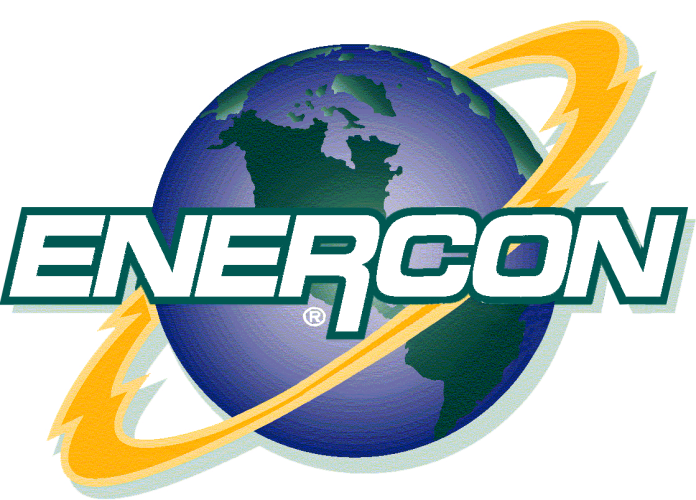A Way to Ensure Reliable Power to Industries
Pakistan and Its Power Generation
The availability of stable & reliable power is the basic necessity for Industries that are the backbone of Economic growth. Pakistan, with the 5th largest population in the world and with the availability of abundant natural and renewable resources should have developed its power Network for industries much better than where it is today.
Let us share the concept using simple wordings so you can understand it without knowing specific technical terms.
What are the different sources of Power available for any small to Medium Size Industry in Pakistan?
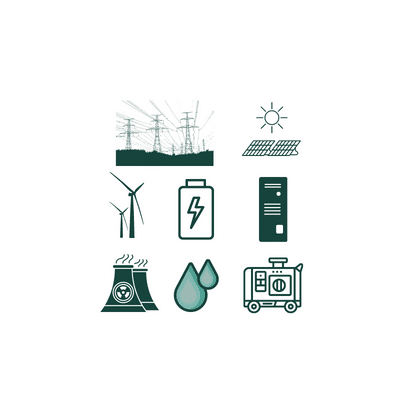
- National Grid or Utility
- Gas Generator
- Diesel or Heavy Fuel Oil Generator
- Solar
- Wind
- Flywheel UPS
- Battery Energy Storage
The availability, quality, and cost of power to industries through previously listed means vary around the clock, a centralized control system we name, “Master control system” or “Micro Grid Control system” is required to ensure that.
- Customer power Generation cost is minimal.
- The sensitive & critical equipment gets the most reliable power.
- All power generation equipment is operated according to the manufacturer’s guidelines.
- The customer power factor is maintained according to Grid guidelines.
- In the event of a sudden failure of a big power source, the plant is prevented from a complete blackout.
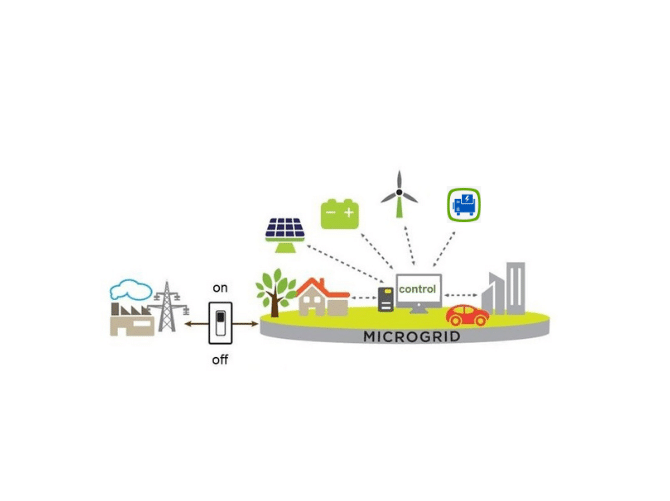
NATIONAL GRID OR UTILITY
K-Electric is simultaneously a power Generation, distribution, and transmission company for the Karachi region. While in the rest of the country, NTDC is responsible for the transmission of power and individual cities have their own distribution companies like IESCO (Islamabad), MEPC (Multan), LESCO (Lahore), and so on. Customers deal with these distribution companies for the purchase of power.
At what voltage level does the industry get the power from the utility company?
AT 132KV LEVEL:
If the customer wants more than 5MW of power then it is provided at 132kV level, which means the customer has to install a 132kV / 11kv Grid station within its premises.
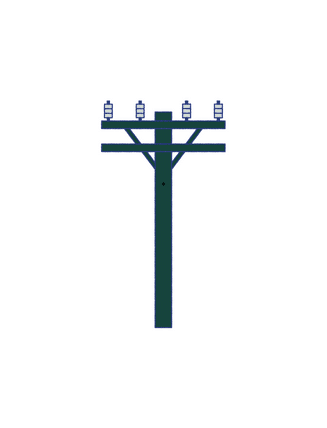
Installation of a Grid requires enormous investment, time, and huge space and therefore it is not suitable for many industries to install a Grid, despite needing above 5MW of power.
Usually, cement and steel plants do have their Grid stations. However, textile.. which is the number one export sector of Pakistan, comprises medium to small size industries and cannot find feasibility for Grid station, the load of the textile unit varies from 1MW to 30MW depending on its size.
AT 11KV LEVEL:
Customers get power on an 11kV level up to 5MW load requirement. Each 132k/11kV Grid station in a Utility company has many outgoing 11kV feeders and customers can have dedicated 11kV feeders from the Grid station to their industry depending size of its sanction load and the availability of separate feeders in the Grid station.
Below is the concept figure for illustration purposes.
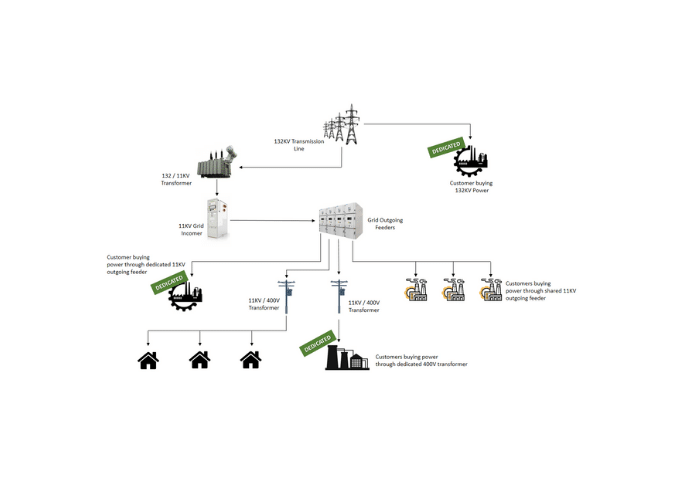
AT 400V LEVEL:
Usually, for load requirements up to 500kW or less, power is provided via a 400V line. An outgoing 11kV feeder from the Grid can be used to provide power to multiple customers. Each customer can have a dedicated 11kV/400V transformer at his premises. This is the most unreliable power compared to 132kV & 11kV as it is impacted by all the line faults and other issues in the distribution Network.
DISTURBANCE AND FAULTS IN EACH 132KV, 11KV, 400 LEVEL:
When the consumer is getting a 132kV connection, it is going to face minimum disturbance from the Grid Network as a 132kV line is most reliable compared to 400V & 11kV networks. The breakdown of power is rare and only occurs due to a National Level fault.
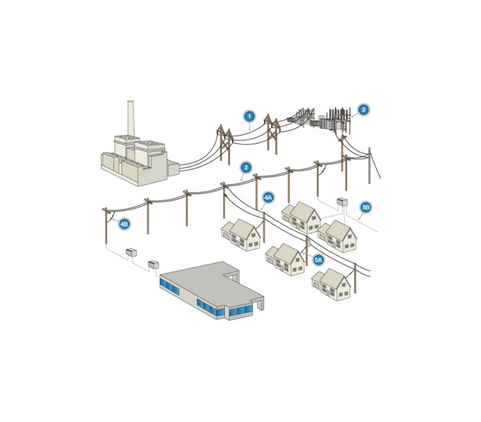
There is usually a 40MVA or 25MVA, 132kV/11kV transformer in the Grid, and all different 11kV customers are connected to this transformer. When any one customer produces a fault or makes heavy switching, all other customers connected to the same transformer would experience its impact. There are more chances of distribution line faults. Thus, the reliability of the 11kV power is less compared to the 132kV line.
Apart from complete blackout, at all levels, consumers can face momentary loss of voltage for the duration of 100-200msec. In addition, 11kV & 400V consumers can also face fluctuation of voltage for a longer duration.
SOLUTION FOR THE POWER QUALITY ISSUES:
- Complete Blackout of Grid Supply:
The only solution is to bring alternate power that could be standby Generators together with Solar.
2. Fluctuation in Voltage of Grid Supply:
It occurs at 11kV or 400V and a possible remedy is to install an Automatic Voltage Regulator.
3. Momentary Loss in Voltage / Jerk In Grid Supply:
This is a unique problem. Although according to IEEE standards, momentary loss of voltage is accepted as inherent behavior of the National Grid. But customer-sensitive machines with VFDs and other Electronic devices can detect this disturbance and stop working.
The most expensive and most reliable solution is installing a Flywheel or Rotary type UPS or Batteries
There are other issues that can happen in customers’ power quality related to current, and these are mostly caused by their own load, these can be addressed by using Active & Passive Filters and capacitors.
GAS GENERATORS:
During Pakistan’s Economic boom in the early 2000s, gas was available for Industries to set up in-house power plants. We term this as captive Power Generation. Many industries during that era disconnected Grid connections and completely relied on Gas Generators and used them as their prime power source as the power Generation cost was much cheaper compared to the National Grid and it was also reliable and stable compared to the National Grid.
Gas Generators are available in size of 1MW, 1.5MW, 2MW, 2.5MW, 3MW, 4.5MW, etc, Industries may use Gas turbines which can be higher in size from 5M, 7.5MW, 10MW, etc
Gas Generators are the source of self-generated, reliable, and stable power but Industries may face the following issues:
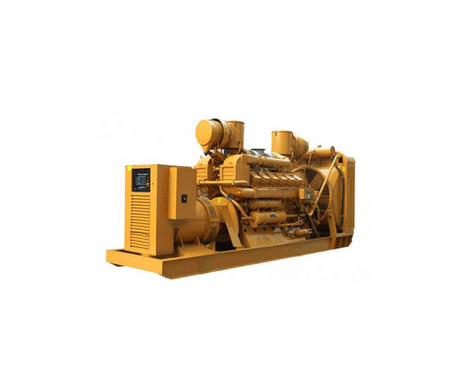
- How can power be made available when the Gas Engine is down due to maintenance or fault?
- How can power be made available when Gas Engines are not running because of the unavailability of Gas?
- How do cater loads that have a specific characteristic that cannot be served with Industrial Gas Generators?
- How can the industry further improve its power generation cost?
HOW CAN POWER BE MADE AVAILABLE WHEN THE GAS ENGINE IS DOWN DUE TO MAINTENANCE OR FAULT?
The customer may install a Diesel Generator that runs as Emergency / Standby Power. Let’s say one customer has a load requirement of 6MW and he has 3 x 2MW Gas generators available, he may install one x 1MW Diesel Generator as an Emergency standby. If one Gas Generator is down, some nonessential load will be out of power, and the remaining will be served through standby Diesel generators.
HOW CAN POWER BE MADE AVAILABLE WHEN THE GAS ENGINES ARE NOT RUNNING BECAUSE OF THE UNAVAILABILITY OF GAS?
Many customers have faced this problem in Pakistan, during the winter season especially, they cannot afford a 100% backup arrangement through Diesel Generators, therefore they need to purchase power from the utility Grid, and they only use Grid power when Gas Generators are not available.
In addition, every customer now prefers to install a Solar plant that can support in the daytime. But Solar systems also need the availability of Grid supply on BUS to deliver its output.
HOW TO CATER LOADS THAT HAVE A SPECIFIC CHARACTERISTIC THAT CAN NOT BE SERVED WITH INDUSTRIAL GAS GENERATORS?
Every industry does its load analysis and if it is known that expensive Gas Generators can be damaged with a certain non-linear load then the customer brings the Grid Power supply in parallel to the Generators and all those variations are catered by Grid Power.
HOW CAN THE INDUSTRY FURTHER IMPROVE ITS POWER GENERATION COST?
This can be done by an efficient Power Generation Control System, where Grid Supply, Gas Generation, Diesel Generation, and now Solar Power are used in the most optimum combinations where operation cost, maintenance cost, and reliability of the system are ensured. We will discuss more in the later part of this article.
DIESEL OR HEAVY FUEL GENERATORS:
They are mostly used as standby, also in some cases of a complete blackout of the plant, Diesel Generators are used to start, which is why they are also called black start Generators.
The cost of Generating Power through Diesel or HFO is highest compared to Gas or Utility Grid. However, when Gas is not available and the customer cannot get a Grid connection timely or its process cannot bear fluctuation in Grid power, it would be forced to use Diesel or Heavy Fuel Oil Generators.
How multiple Gas and/or Diesel Generators can run in parallel?
- If the customer has only one Generator sufficient for its entire load then it will run stand-alone to serve the load, the technical term used for this application is ISLAND MODE.
- If the customer has two different sizes of Generators, they should be able to share the load according to their capacity. Example – 2MW & 1MW generators should take up to 1.66MW & 0.83MW load respectively out of a total load requirement of 2.5MW. The technical term used for this application is LOAD SHARING.
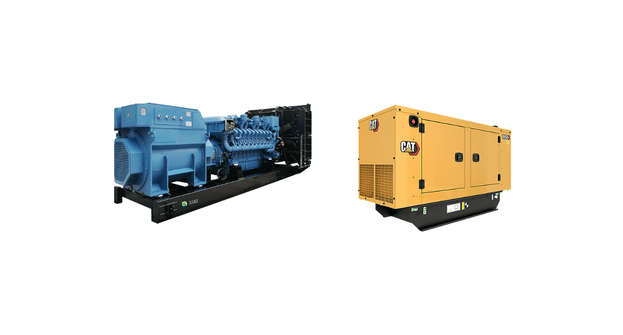
- However, if the customer has the same two Generators, where 2MW is brand new and 1MW Generator is old, the customer wishes to utilize maximum power Generation from 2MW Generator as it consumes less fuel giving the same power compared to the 1MW engine. Thus out of the 2.5MW load requirement, the brand new will serve 2MW while the old one would cater 0.5MW. The technical term used for this application is BASE LOAD OPERATION (when one Engine runs on fixed power KW output in parallel with other Genset)
- Only the minimum number of Generators should run at a time as per the load requirement. For example – if there are 2MW, 2MW & 1MW generators installed and the load requirement is 2.8MW then one 2MW generator should remain OFF. While if the load requirement is 3.5MW then a 1MW generator should remain on standby, the technical term used for this application is LOAD SENSE / LOAD DEMAND MANAGEMENT.
SOLAR POWER
Now, every industry is using solar power at least to cover 15-20% of the load demand. Although the capital cost of Solar power is much higher than Gas or Diesel Generators. However, its operation cost is almost zero compared to the Gas Generators and the life cycle is much longer than Gas or Diesel Generators.
Since solar power is mostly available in the daytime, for a maximum of 8 hours, it is used as a means to reduce overall power Generation Operation costs. However, the customer may continue to require other constant power sources like Gas Generators & Grid to have power available round the clock.
These industrial scale Solar systems are ON Grid type that requires LIVE Energized BUS (either through Grid or Generator) to deliver their power.

It is possible to consume 100% solar output when running with the Grid. Excess power can be exported to the National Grid via Net Metering however when Solar is running with only Generators, its output needs to be curtailed according to the loading of Generators which should be more than 30% according to manufacturers’ recommendation.
It is also possible to connect solar power both with Generators & the Grid simultaneously. The figure below shows a typical example of Solar, Grid, and Generators connected together.
WIND POWER:
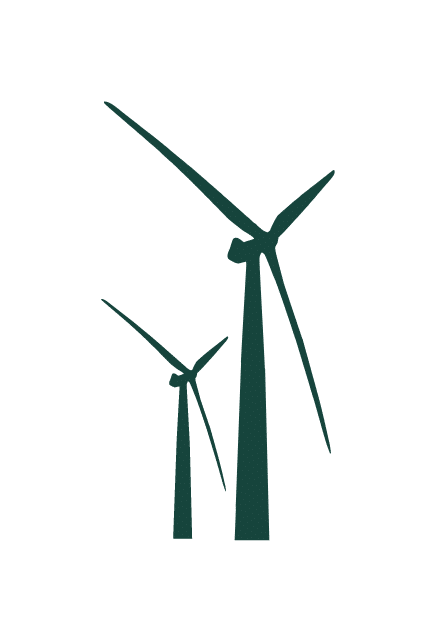
The wind is another source of Power that is not as common as solar used by every industry and is more restricted to the two wind corridors of Dhabeji and Jhimpir Sindh. Most of the wind power plants are used as IPPs for selling power to National Grid. However, some industries do have wind power available for their own use with a mix of other sources of power discussed above.
FLYWHEEL UPS:
Some customers who are running their Gas / Diesel Generators in parallel with the Grid may face short-term jerk of power from the Grid end, which causes a rate of change of frequency & Vector Jump protection activated in accordance with the Generator manufacturer’s safety recommendations. The grid breaker is instantly isolated from the system and if the Generators are not capable enough to bear the extra load then the complete plant can be shut down. In order to avoid a complete blackout, the Central Control system activates load shedding and this will isolate non-critical load to prevent over loading of Generators.
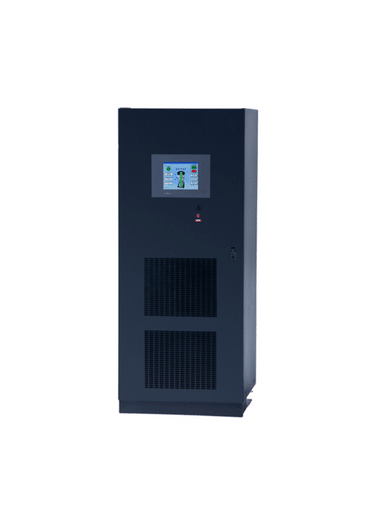
However, if the customer cannot afford to disconnect power to its load even for a short duration then it has to arrange some backup via flywheel UPS or batteries. Fly Wheel UPS is an old and expensive solution that can provide back up to 10MW for 10 seconds.
BATTERY ENERGY STORAGE:
Battery backup for higher loads is now possible, thanks to advancements in Battery CELLS technology. Now BESS systems are available from commercial scale (1MW to 10 MW) to large utility-scale (above 10 MW up to 100MW or above)
BESS is now very important part of the renewable Energy mix, many governments made it mandatory to install a considerable amount of BESS system along with Solar plants to store excess Energy generation in the daytime and utilize it after sunset.
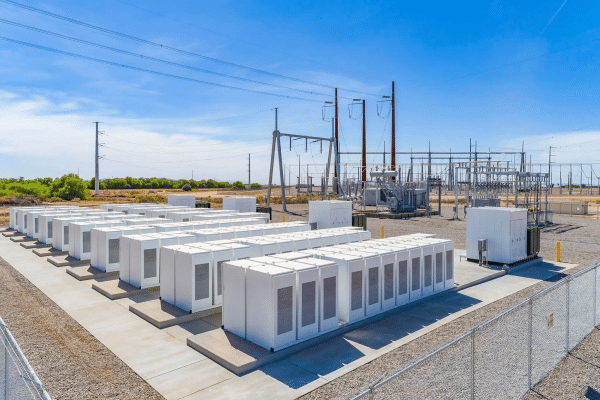
There are the following applications for using BESS systems.
- Prime Power: In the absence of Grid or Generator Power, a combination of solar & BESS can serve the 24 / 7 power needs of customer.
- Backup Power: In case of a sudden drop of power from any primary power source, BESS can provide immediate backup power to avoid a complete blackout.
- Peak Shaving: Customers can consume BESS to avoid using any other expensive source of power.
MICROGRID:
If you have read the article up till now, you would have ample understanding of different sources of power available with any industry, now we understand the concept of Mirco Grid and Central Controlling of different sources of power available with the industry.
HOW DOES THE INDUSTRY MICROGRID UTILIZE THE NATIONAL GRID IN THE PRESENCE OF OTHER AVAILABLE SOURCES OF POWER?
A Mirco Grid can connect or disconnect with the National Grid. It is important to note that we cannot vary the parameters of the National Grid Power and we can only give commands to other sources of power (Generators, Solar, wind, etc) to adjust its parameters according to the National Grid.
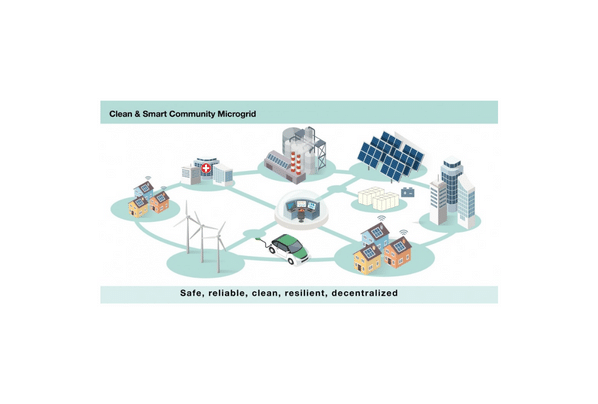
MICROGRID SOLUTION OFFERED BY ENERCON SYSTEMS:
Enercon micro-grid control solution is the answer to all the above-discussed issues.
As we have learned National Grid has interruption problems. Gas is infrequently available while solar only works for 10 hrs. So every industry must have a mix of different power sources available at its disposal.
Enercon Micro-grid control ensures that the customer can run parallel and switch between the National grid, solar, generator, wind, HFO, and any other source of power as and when required considering reliability, availability, and cost factors.
Solar being renewable and green energy must be fully consumed first and other sources of power can be utilized in parallel with it. During the nighttime, other sources of power are to be used according to their cost & availability.
The micro-grid solution being offered by Enercon Systems is special in the way that it is designed and integrated with full flexibility of different manufacturers’ specifications and brands for solar inverters, Generators, wind turbine inverters, etc.
Enercon micro-grid control is compatible with different communication protocols and third-party devices for easy access to information at local and remote locations.
Our objective is to achieve generation cost optimization, reduce production downtime, and ensure the Mico-grid system is implemented with minimum possible modification in the existing system or implementation of the new system with future expansion and customization provision.


